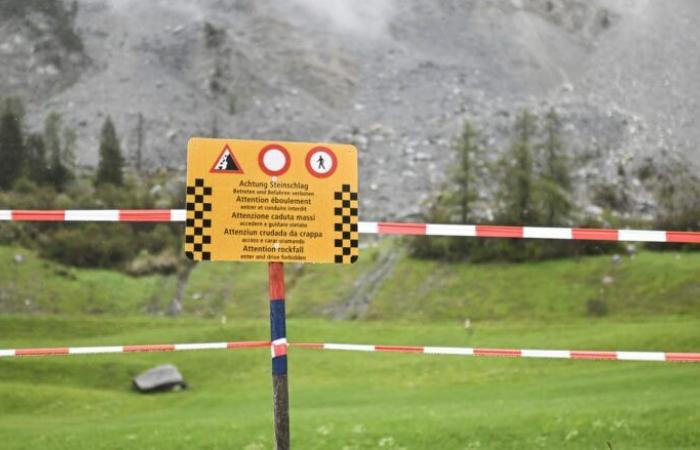Rock fall near Brienz: Swiss village has to be evacuated again
The settlement of Brienz in the Swiss Alps has to reckon with another catastrophe: huge masses of rock are moving on the rubble heap above the village.
© GIAN EHRENZELLER / KEYSTONE / picture alliance (detail)
For weeks starting in May 2023, people were no longer allowed to enter Brienz until the mountain had moved.
In May 2023, around 80 residents of Brienz in the Swiss canton of Graubünden had to leave their homes because a huge landslide threatened to hit their village. After this went off on the night of June 16, 2023, people were able to return – in the hope that the situation on the slope would calm down. But the settlement must prepare for another evacuation, as Swiss authorities warn: Over a million cubic meters of rock debris could shift towards the valley in the next few weeks and threaten the village once again.
Geological measurements by the Swiss early warning service Albula/Alvra show that the uppermost part of the rubble heap has been moving at a rate of more than 30 centimeters per day since the second half of September 2024. A flow of rubble from the heap cannot therefore be ruled out, for example due to further rainfall in the region after a wet last year, due to a rock fall from above onto the existing rubble heap or if the material accelerates further. However, the authorities are not completely ruling out the possibility of the situation calming down.
The community leadership has therefore decided on the “yellow phase” and is preparing a precautionary evacuation. The time of this had not yet been determined on the morning of November 9th. Unlike the so-called “island” in the summer of 2023, no longer warning times could be expected, the community said. Back then, the situation on the mountain was more predictable.
The unstable slope of Piz Linard is part of a landslide structure approximately three square kilometers in size. The sliding movement probably began at the end of the last ice age, when the glaciers in the Alps melted and the stabilizing abutment of the ice disappeared. However, the speed of the sliding movement had increased in recent years. Previously it was a few centimeters per year, but in 2011 experts were able to measure around 20 centimeters. In 2020 this had accelerated to 1.2 meters per year. In addition, from 2018 onwards, the rubble above the village began to settle more rapidly, at around four meters per year.
Due to climate change and the increased warming of the mountains up to high altitudes, geologists expect an increase in rock falls and landslides in the coming years and decades because the ice that sometimes holds the rock together is disappearing. Increased changes between frost and thawing also weather the mountains more quickly and further increase the risk.







